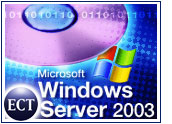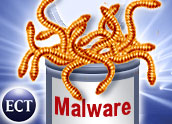
Microsoft has launched Systems Management Server 2003 at the Microsoft IT Forum 2003 in Copenhagen, Denmark. For those unfamiliar with the software, Systems Management Server 2003 — which technically is change-management software designed specifically for Windows — automates patch deployment, application deployment and asset-management for large Windows deployments.
This latest release is a key piece of the company’s Dynamic Systems Initiative, an effort designed to simplify and automate how businesses deploy and operate large installations. “After successfully helping early adopters manage 250,000 devices at more than 60 sites worldwide, Systems Management Server 2003 is now available for customers across the globe,” said Kirill Tatarinov, corporate vice president of the Enterprise Management Division at Microsoft.
“Customers can begin to experience the same cost savings, seamless upgrades and substantial improvements in software distribution, reporting, scalability and performance that have marked the product’s early adopter and beta testing phases,” Tatarinov said.
Early Adopter Successes
According to Microsoft, companies such as SAP America and Marathon Oil already have achieved strong results as early adopters. SAP America deployed Systems Management Server 2003 as a way to improve remote management for mobile users, inventory hardware and software, and provide a more secure way to distribute software and security updates.
The company now uses Systems Management Server 2003 to manage a total of 7,000 workstations and mobile clients across Canada, the United States and Latin America, and has reduced the time it takes to deploy large software packages from weeks to hours.
“With Systems Management Server 2003, we can get software in place for download in about an hour, and the product’s tracking features tell us automatically where we need to follow up,” said Jeffrey Gordon, technical support consultant at SAP America.
“In addition, integration with the Active Directory service and Web reporting in Systems Management Server 2003 will make it much easier to manage our global inventory of hardware and software,” Gordon said.
No Changes Required
Marathon Oil — a US$30 billion organization with more than 30,000 employees worldwide — implemented an early version of Systems Management Server 2003 to help manage more than 10,000 PCs. The company reported being able to perform the upgrade to Systems Management Server 2003 with no changes to existing infrastructure.
The new system identified 300 desktop machines that were not functioning properly. “Right away, Systems Management Server 2003 found 300 broken clients that weren’t upgrading software or running patches,” said Michael Niehaus, information technology consultant at Marathon Oil.
“And in deploying new machines, we’ve gone from 24 hours of downtime to eight hours,” he added. “What’s more, we didn’t have to redesign anything to realise these benefits — we’re simply taking advantage of the built-in features of Systems Management Server 2003.”
Estimated retail pricing for Systems Management Server 2003 with 10 device client access licenses is $1,219. Customers can download a 120-day evaluation copy of Systems Management Server 2003 from Microsoft.
Rights Management Too
Microsoft also recently announced the public availability of Windows Rights Management Services (RMS), information-protection technology designed specifically for Windows Server 2003. The software is designed to help companies safeguard sensitive information from unauthorized use.
RMS allows information workers to distribute information within their organizations and define how and under what circumstances it can be used, such as when it expires and who can open, modify, print and forward it. According to Microsoft, the ability to express and enforce document-level protection will allow organizations to share information more broadly, with less risk of inadvertent or intentional misuse.
“Our customers have told us they need help protecting sensitive information from accidental and intentional distribution to unauthorized recipients,” said Mike Nash, corporate vice president of the security business unit at Microsoft.
Information Protection
RMS was developed with companies in mind because they produce volumes of sensitive information and have specialized departments — such as human resources and finance — that require a high level of confidentiality.
For example, healthcare companies create a wide variety of sensitive information and documentation — such as patient records, development plans and clinical trial results — that can be safeguarded by RMS.
“The Windows Rights Management Services infrastructure built on Windows Server 2003 provides Merck with a means to control the distribution of our mission-critical information with persistent usage policies,” said Jim King, manager of the technology R&D group in the clinical data program at Merck & Co.
Information Protection for Developers
Using the RMS client and server software development kits, developers can create new products or integrate rights management into existing applications. Windows Rights Management Services is a .NET Web service built on the Microsoft .NET Framework that can interoperate with business processes via Web services.
Microsoft also is developing a hardware appliance that will let customers manage RMS operational services without connectivity to the Internet.
Microsoft is working with Rainbow Technologies, a security company, to complete the design and development of this deployment component. The appliance will enable client machines to be activated as part of the RMS trusted environment from within the network perimeter, providing a flexible deployment technology to fit the way an organization works.





















































